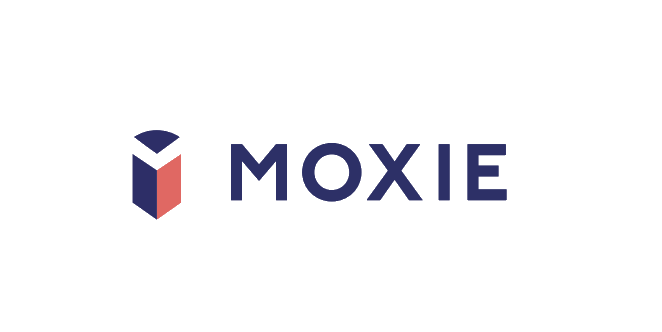Deciphering the Role of Generative AI in Education: A Framework for Value and Viability
Acknowledgment: This piece extends and adapts Barak Turovsky’s proposed framework for evaluating Generative AI use cases to the educational sector, providing a more granular analysis of language resources pertinent to academic usage.
***
The arrival of public access to Large Language Models (LLMs such as ChatGPT, Bard, Claude, etc.) has sparked an important conversation among educators: Where does Generative AI (GenAI) fit in the world of learning and teaching? Using Turovsky's ideas on how well AI can communicate, how accurate it is, and what's at risk, we've added a new layer to the discussion—complexity. This piece is crucial because it helps us understand how well GenAI can handle the sophisticated language tasks that are so vital in academia.
Fluency, Accuracy, Stakes, and Complexity in Educational Settings
The CAF (Complexity-Accuracy-Fluency) model, a foundational theory in second language research, informs the structure of our framework. Turovsky's paradigm includes Accuracy and Fluency, aligning with two components of the CAF triad, but whether he intends these to mirror the CAF definitions remains unclear. This uncertainty notwithstanding, we embrace the chance to elaborate on his model because of the potential for these frameworks to intersect. The relevance of this intersection becomes increasingly apparent when we examine the role of Generative AI in the domain of academic language—a 'foreign' dialect for many scholars, filled with its own set of intricate nuances. By weaving in Complexity, we enrich Turovsky's broad AF framework into a more nuanced CAF model, thereby enhancing our approach to more effectively address the multifaceted nature of educational communication.
This enhanced framework becomes particularly salient when we consider the diverse array of tasks that educators envision for Generative AI's involvement. We’ve heard educators discussing a broad spectrum of tasks for Generative AI’s joint participation: From crafting learning prompts and building case studies to exploring assessment and publishing peer-reviewed research, these tasks vary in stakes and complexity. Lower-stakes tasks like generating prompts are less dependent on precision, while high-stakes activities such as research publication demand the highest levels of accuracy and complexity in language usage. Our expanded CAF model is designed to navigate this spectrum, ensuring that Generative AI can be tailored to meet the specific needs of each educational task.
Augmenting Turovsky’s axis, we’ve incorporated a visual model for complexity, where CAF is envisioned as follows:
the x-axis represents Accuracy
the y-axis represents Fluency
the size of each bubble represents Complexity
the color of the bubbles indicates the stakes associated with each use case, low, mild, high, as with the original (green/yellow/red)
An expanded version of Turovsky’s framework for GenAI Use Cases
The figure presents a two-dimensional matrix delineating the relationship between accuracy, fluency, and stakes in various academic and professional activities, as Turovsky originally imagined. The horizontal axis ranges from 'Low accuracy' on the left to 'High accuracy' on the right, while the vertical axis spans from 'Low stakes' at the bottom to 'High stakes' at the top. The activities such as 'Developing learning prompts,' 'Composing example assignments,' and 'Designing instructional graphics' are plotted within this matrix to illustrate their relevance or importance against these criteria. The figure also differentiates between 'Productivity use cases,' likely associated with more automated processes, and 'Decision-making use cases,' which may involve more human judgment and augmentation. The size of the bubbles representing these activities is indicative of their imagined complexity, offering a visual metaphor for the relative intricacy and depth required in each case.
It’s also important to note the blank spaces in the lower quadrants. These areas are intentionally sparse, reflecting the educational sector's minimal room for low-stakes and low-accuracy applications. Academia demands high accuracy and typically involves higher-stakes scenarios, which is why you'll find a concentration of activities in the upper quadrants. This visual absence underscores the rigorous standards of academic work and the critical importance of reliability and consequence in educational tasks.
Human Oversight: The Arbiter of Complexity
The graphical matrix, as delineated in the figure, underscores the varying degrees of complexity inherent in academic and professional activities. It visually asserts that as the complexity of tasks increases, depicted by the enlarging bubbles, the need for human oversight becomes more pronounced. This principle is particularly salient in the realm of visual outputs generated by AI, such as infographics or educational diagrams. Here, the emphasis on linguistic fluency, a predominant factor in text-based applications, may take a backseat to the visual clarity and accuracy of information conveyed.
Despite the mode of communication, the 'Human in the Loop' approach is indispensable, enabling educators and academic professionals to fine-tune the level of language sophistication to suit the visual medium. While fluency retains its importance, it is the precision and unambiguous nature of visual information that are paramount. In this context, human intervention ensures that GenAI's contributions are contextually apt and pedagogically sound. This oversight is vital to avoid overstating linguistic fluency in scenarios where it may be less imperative, thus maintaining a balance between clarity of communication and the intricacies of content.
Counterarguments and Rebuttals
Critics argue that GenAI may homogenize academic discourse or circumvent critical thinking. However, when integrated with human oversight, GenAI can diversify expression and scaffold analytical skills. It's not a replacement but a supplement to human intellect, enriching the educational landscape.
Key Takeaways
Our role as educators is to shepherd learners towards enlightened horizons. By meticulously evaluating GenAI applications through the CAF lens and maintaining human oversight, we can harness its potential while safeguarding academic integrity. The ultimate goal is to enhance the educational ecosystem, aligning GenAI's capabilities with the communal pursuit of knowledge.

